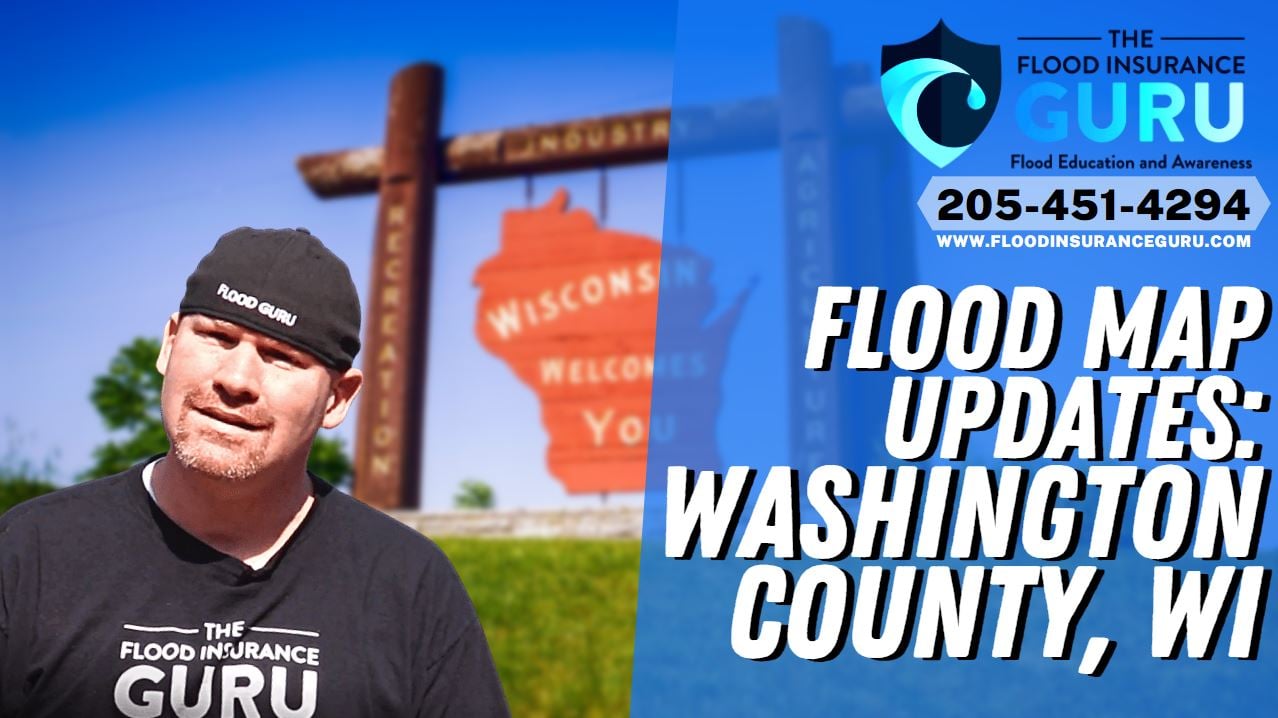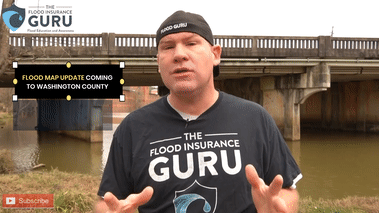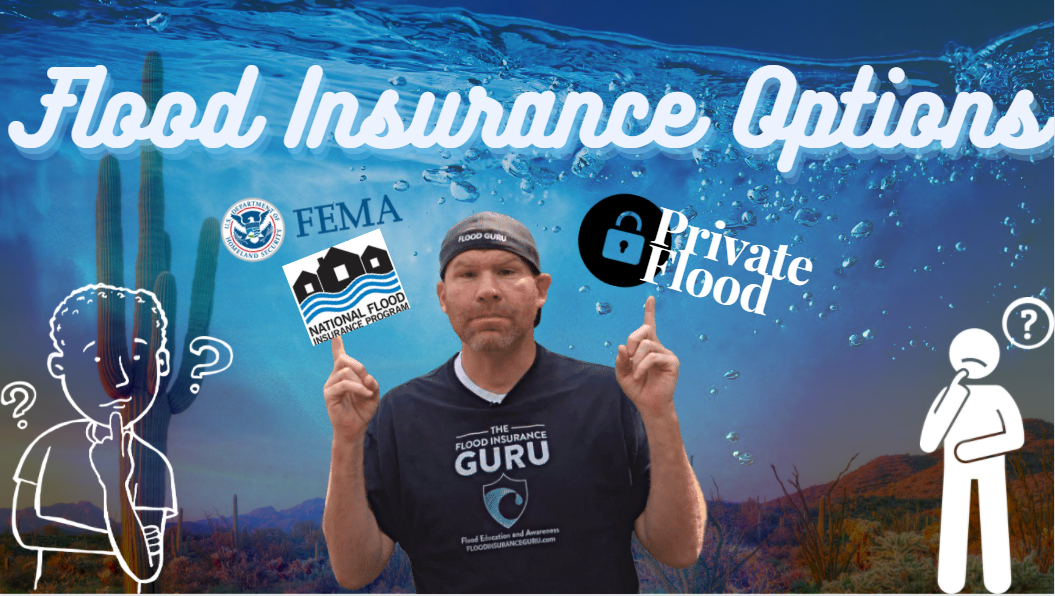Search for topics or resources
Enter your search below and hit enter or click the search icon.

Despite no longer using flood zones as a basis for flood insurance rates across the country, flood map updates still have a firm grip over flood insurance.
In this video, we talk about the good, the bad, and the ugly changes coming to Washington County, Wisconsin with this new flood map update; in fact, it happened on February 25th, 2022.

Flood insurance rate maps (FIRMs) are constantly updated in order to reflect the current floodplain devolvement and changes to a certain area. Now, you may get a new flood map every other month or sometimes it can take up to years. Simply being "in the know" when it comes to these changes can really help you manage the ever-changing landscape of the flood insurance industry.
Now, when it comes to flood map updates from the Federal Emergency Management Agency (FEMA), this generally shows you three separate changes: "in to out movement", "out to in movement", and "in to in movement".
So, what are these changes coming to more than 14,000 properties in Washington County, and how do they impact your flood insurance?
The Good
When it comes to the good changes in flood map updates, this generally falls into the "in to out movement". This is a beneficial change for about 179 properties owners impacted by this movement in Washington County. Generally, this simply means that your property is being removed from the special flood hazard area (SFHA).
It's called this way because a property that's in a high-risk flood zone will be moved out to a low-risk flood zone like a Flood Zone X. Although flood insurance doesn't consider flood zones when it comes to premium rates anymore, this type of movement still holds good news for property owners.

Being moved into a lower-risk flood zone or Flood Zone X when you're previously in a high-risk zone indicates that your property is now facing less risk of flooding. This also means that due to the lower risks, your mortgage company will no longer require you to carry flood insurance on your property.
Although we'd love to tell you to cancel that policy, get your refund, and save more money by removing flood insurance from your expenses, we highly discourage removing flood insurance for your property. Yes! This is especially true if you're in a low-risk flood zone. Mostly, due to the fact that even Flood Zone X gets flooded and sometimes they get flood damage that is substantially worse than those in coastal zones or SFHA.
Now, let's move into the bad changes which are coming in form of the aforementioned "out to in movement". This change is expected to impact about 344 properties in Washington County.
In a direct opposite of the good change, this means that if you're one of the properties, you'll be getting moved from outside the SFHA or a low-risk flood zone, and into a high-risk flood zone. Think of it as getting mapped to a Flood Zone A when you were previously in a Flood Zone X.
Again, although this doesn't really impact flood insurance rates directly, it's important to note that Flood Zone A generally means that the area doesn't have a base flood elevation. So floodplain administrators don't really know where and how flooding can start hence you're facing a higher risk than before.
If you don't install the necessary flood prevention or mitigation measures, this will only hurt your premium rates regardless of whether you're doing a National Flood Insurance Program (NFIP) policy or a private flood insurance one. Properties in Flood Zone A, SFHA, or any high-risk zone are also required to carry flood insurance always.
Lastly, we have the ugly change or "in to in movement" which covers the largest impact on this flood map update for Washington County, Wisconsin. This is due to the fact that about 2,420 properties will retain their flood zone. This means that if you're in Flood Zone AE, you will stay there until the next flood map update.
Equally, "in to in" may also indicate properties that are in Flood Zone X will stay in this low-risk flood zone; however if you're in the SFHA, this might also mean that you're being mapped deeper into it. Think of it as moving from a Flood Zone A to a Flood Zone AE.
If you're staying in your flood zone this means that you will also retain the same flood insurance rates since your risks also stay the same. On the other hand, if you fall into being moved deeper into the SFHA, which indicates that you're facing a higher risk for flooding, you will also see your premium rates skyrocket.
Being in a flood zone A is already a bad thing, but this can become ugly if you move into a Flood Zone AE because generally, this type of high-risk area in the SFHA indicates that the base flood elevation has been determined.

Now, that you know these changes, it's best to also know your flood insurance options in Washington County especially if you're one of the property owners that are being moved into or are staying in the SFHA where flood insurance is required.

The National Flood Insurance Program (NFIP) is purely managed by the federal government since this is FEMA's answer to flood insurance. An NFIP flood policy can get you flood coverage on both your dwelling and the contents within it.
When we say dwelling, this simply pertains to either the residential property or commercial building that you're trying to insure with NFIP and FEMA; contents will be more about the personal property and items you have inside the insured building.

There is a coverage limit when it comes to federal flood policies. Flood damage to buildings will be covered to a maximum of $250,000 for residential policies and can only go up to $500,000 maximum if it's for a commercial property. Regardless of the type of property you have written, you can expect to get a $100,000 maximum contents coverage from an NFIP policy.
There's also what's called the Increased Cost of Compliance (ICC) coverage. This is a $30,000 additional coverage for your property in order to make sure that there are flood mitigation efforts made on the property according to the federal government's standards.
Generally, this can include sandbagging your property, installing floodproofing walls, raising your lowest floor from the base flood elevation levels, and putting flood openings. The labor that goes into making these mitigation efforts happen will also be covered under the ICC.
There are also perks with your participating community in Washington County. A participating community gets access to federal flood insurance and disaster assistance, but more importantly, you also get to work with your community on raising your Community Rating System (CRS) score.
The CRS measures and rewards the overall flood mitigation efforts done by the community according to FEMA's standards on floodplain management. Simply put, the higher your CRS score is, the bigger the flood insurance discount you'll get from FEMA and the NFIP.
You can start enjoying your NFIP policy after a 30-day waiting period from the flood insurance purchase.
If the federal flood insurance option doesn't really work for you then you can manage this new floodplain mapping through the private flood insurance market. It's important to note that this market will solely be managed and provided by private insurance companies which generally means that the red tapes FEMA and NFIP has to go through won't be there.
The first thing you'll immediately see with the private flood market is that there are significantly shorter waiting periods for your flood policy. Once you have everything settled and paid for, the waiting period for the private flood carriers will follow a much shorter timeframe compared to NFIP. A private flood insurance policy can take effect on 3 or up to 15 days maximum.

Another good thing coming out of private flood insurance is that there are no coverage limits. This means that you won't really need to stress over how to get covered for a $500,000 home since it will be fully covered by your policy. This is the same with contents coverage and you'll also get additional coverages like replacement costs, additional living expenses, and loss of use.
Fair warning, it's a known issue in the private insurance market in general that they will do moratoriums when there are risks that are too high for their comforts.
This simply means that they will either put a stop or take a break from providing flood insurance policies to a certain area that has higher risks. There's also a chance that you might not get to buy flood insurance from them once they decide to non-renew your policy.
At the end of the day, the choice of where you'll be getting flood insurance depends on you. What's really important is that you know your flood risks and have enough protection from all possible outcomes of a flood event such as flood loss and flood damage.
Click the link below to access our Flood Learning Center where we try to answer your questions on flood insurance and beyond.
Remember, we have an educational background in flood mitigation and we want to help you understand flood risks, your flood insurance, and mitigating your property long-term.
Topics: